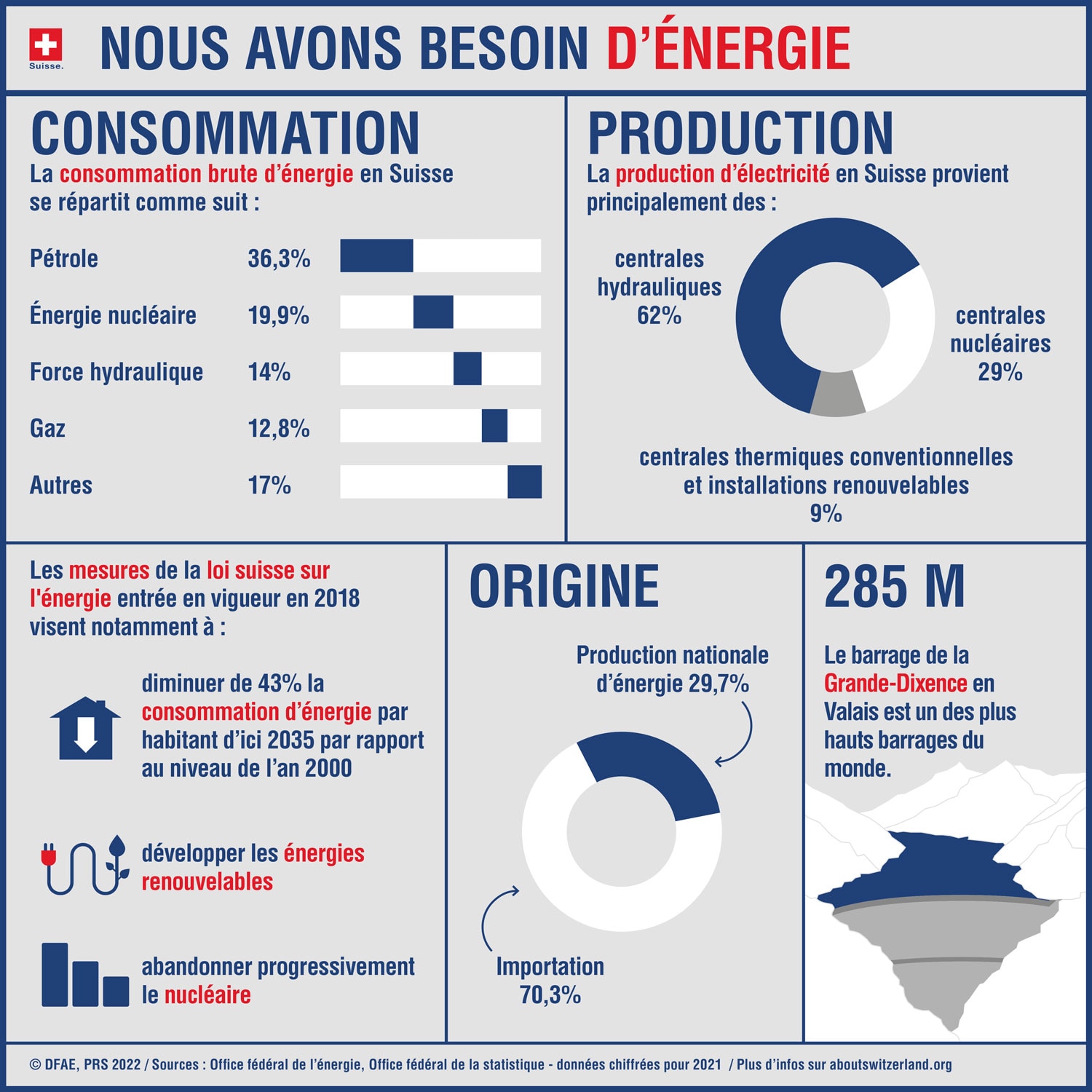- cross-posted to:
- collapse@lemmy.ml
- cross-posted to:
- collapse@lemmy.ml
Water-rich Switzerland controls Western Europe’s taps — and wants it to stay that way. Its drought-ridden neighbors are getting nervous.
At the western edge of Lake Geneva, where the mighty Rhône river squeezes through a narrow dam, a blunder of French diplomacy is carved into stone for all to see.
The inscription, mounted on the walls of an old industrial building, commemorates the 1884 accord between three Swiss cantons that have regulated the water levels of this vast Alpine lake ever since. It does not mention France — even though some 40 percent of the lake is French territory.
“France, for some reason, wasn’t part of the contract,” said Jérôme Barras as he unlocked a gate below the epigraph to inspect a hydropower plant under the dam he has managed for more than a decade.
When the agreement was renewed and a new dam was built a century later, Paris still wasn’t interested.
The French government now regrets that.
…
And France has suddenly realized it can’t control that tap as it battles water shortages, destructive droughts and baking heat.
1884 accord
…
When the agreement was renewed and a new dam was built a century later, Paris still wasn’t interested.
If France wasn’t interested in water rights as recently as 1984 – well within the era of decent understanding of both hydrology and climate change – that’s squarely its own damn fault.
Dam fault
They were dam idiots

Then there’s the issue of how that water gets used. Switzerland, which has decided to phase out nuclear power, is miffed about guaranteeing water supply so France can cool its expanding nuclear fleet.
It’s possible to drastically reduce how much cooling water a nuclear power plant requires by taking a little water out and fully evaporating it, rather than running a lot of water in and heating up the whole river a little bit. My understanding is that French power plants use the second approach, which is older.
The Rhône’s waters are vital to the Bugey nuclear plant, which sits just across the Swiss border — much to the dismay of Hodgers, a Green Party politician fiercely opposed to atomic power.
Well, if he just doesn’t like nuclear power generation at all, there’s not much that can be done.
Most of French power plants are using evaporative cooling. Only 4 out of the 18 are rejecting water into the river.
Swiss green party might not like nuclear power but Switzerland is producing less than 30% of their electricity, the other 70% is imported from neighbors, mostly France.Soooo they should probably be nice with their neighbors.Never mind, see comment below
You’re mixing up two values here. Switzerland imports less than 10% of its electricity, the number you’re probably referring to is the total of “Energieträgern”, so oil, oal, gasoline, etc.
https://www.bfs.admin.ch/bfs/de/home/statistiken/energie/versorgung.html
You are right, I have not read my sources properly so o got mixed up between the electricity production and energy production.
Especially with this picture

googles
It looks like that’s true, but that the ones returning the warmer water rather than evaporating it are also ones on the rivers (rather than the coast).
I imagine the third option is that they could run the cooling water in a loop with some really big radiators and not take water from the river at all if they wanted, but it would be very expensive.
Some places use the waste heat for district heating, in which case the waste heat isn’t really a waste any more. I don’t know if France does that, though. The Soviet Union was super-big on district heating. That won’t consume all of the heat, and it really just gets you cheap heating for the city – like, a large power plant will generate more heat than you actually need to heat a city.
In the US, we historically had some very limited district heating, though that was driven off waste heat from fossil fuel power plants, where you can do the same thing.
If you can make use of the heat output directly, it’s an area where thermal options (fossil fuels, nuclear, geothermal, solar thermal) compare particularly favorably to non-thermal options (solar panels, wind, hydroelectric), because there the thermal options don’t need to see the efficiency reduction from conversion to electricity and back.
googles
Sounds like they aren’t currently using the heat for district heating (or at least some aren’t), so they could probably use at least some of the heat some of the time for that.
https://www.sciencedirect.com/science/article/abs/pii/S0301421518300533
While being source of low carbon electricity, French nuclear plants also produce excess heat currently rejected to the surrounding environment. This heat represents approximately two thirds of the total energy generated (Safa, 2012). The whole French nuclear fleet and most nuclear reactors operating today in the world (277 out of 438) and tomorrow (59 out of 70 under construction; IAEA, 2015) are Pressurized Water Reactors (PWR). Similarly to cogeneration plants based on fossil fuels or biomass, PWR can be designed to produce both electricity and heat without affecting the reactor’s safety (STUK, 2009: p. 6). Doing so would involve reducing the amount of heat which is converted to electricity (Carnot efficiency). For the temperatures useful to conventional 3rd generation DH networks (80–120 °C), the thermal energy recovered is six times higher than the electricity losses (Safa, 2012). Production of heat for DH application has been experienced with at least 51 nuclear combined heat and power plant (NCHP; Leurent et al., 2017), hence providing valuable feedbacks for optimizing such energy systems.
That being said, the time when anyone cares about water flows and river temperatures is presumably the summer, and that’s also going to be when there’s less demand for heat. So it’s more a way to get heating more-efficiently than an alternative to dumping heat somewhere.
Unless you’re gonna create some absolutely colossal thermal energy store that could span seasons, like, put a cover on a lake, heat it up in the summer, and then use that heat in the winter.
The other issue is that in order to provide district heating you’ve got to put your power plant next to a city instead of in the middle of nowhere, like we prefer to do in the US (especially for nuclear).
I think for the US, the structure of the city is also a factor.
This is painting with a broad brush, but:
American cities tend to have a very high-density core that has offices and stores and such, and are surrounded by a lot of low-density housing.
European cities tend to have a medium-density, about four stories, across the city.
That’s a function of the fact that a lot of the US was constructed after the invention of the elevator (which allows for taller building heights to be practical; historically, top floors were undesirable) and the automobile (which allows for lower-density housing to be practical). There are few skyscrapers in Europe; Turkey actually has the most, by a huge margin, and like the US, Turkey saw a lot of population growth in the 20th century, so a lot of Turkey is gonna be new-build.
I spent a while looking at the few US district heating systems that existed in the past (and a few, now). They don’t do the suburbs – they provided heating to that high-density city core. There, they don’t have to run pipes a long distance to transport heat; electricity is cheaper to transport than heat.
There are exceptions that do provide district heating to residences, like Manhattan, but Manhattan is also a (partial) exception to the “high-density core, low-density suburbs” structure; New York City, though the largest American city, doesn’t look much like a typical American city:
https://en.wikipedia.org/wiki/New_York_City_steam_system
https://streeteasy.com/blog/steam-heat-in-new-york-city-explainer/
New York’s first steam system was installed in 1881 in response to a need for an underground system immune to the elements. Now, New York has over 105 miles of steam piping serving nearly 2,000 buildings — it’s the largest steam system in the world, by a massive margin.
But for the general case, I expect that it’s gonna make less economic sense to do district heating of housing in the US than in Europe.
I don’t think you’d want to tie your ability to cool the reactor to outside air temperatures. Bodies of water do warm up, but are generally a much better “ultimate heat sink”.
Eh, as long as you designed it with a reasonable factor of safety (say, highest temperature ever recorded at that location +5C, maybe) it’d be fine. I think the cost is a far, far bigger issue because the radiator necessary would be absolutely gigantic. Plus if you’ve got fans cooling it (so you can make it smaller) instead of passively cooling it, that’s another point of failure, although I suppose if getting river water relies on pumps then it isn’t any worse.
Typical safety margins for weather use 50 or 100 year events. The system that is rated for that weather event has a margin in it. Roofs, for example, are designed to withstand the snow loads for the worst snow storm in 50 years but the truss systems which are rated to handle that load can handle more.
I know, but the safety margin for a nuclear reactor should be atypical.
It’s possible to drastically reduce how much cooling water a nuclear power plant requires by taking a little water out and fully evaporating it, rather than running a lot of water in and heating up the whole river a little bit.
Ah yes. Great idea. That water wouldn’t influence the local climate at all, right?
You’re concerned about a cooling tower that literally just evaporates water? You realize those aren’t nuclear specific?
How much water? What effects will have on the river and the local water? And yes, these are questions one needs to be concerned about in any project of this size.
These guys say that there hasn’t been a much research on microclimate effects since the 1970s, though they did look at it, and found that it slightly increases crop yields in the area in the US by increasing precipitation a bit.
The growing prevalence of clean energy raises the question of possible associated externalities. This article studies the effects of nuclear power plant development (and, as a result, the increased amount of water in the atmosphere from evaporative cooling systems) on nearby crop yields and finds that an average nuclear power plant increases local soybean yields by 2 and corn yields by 1 percent. Considering the low elasticity of demand for these crops, the yield increases translate to annual net benefits of $229 million (2020 US dollars) – $317 million in losses to farmers and $546 million in benefits to consumers.





